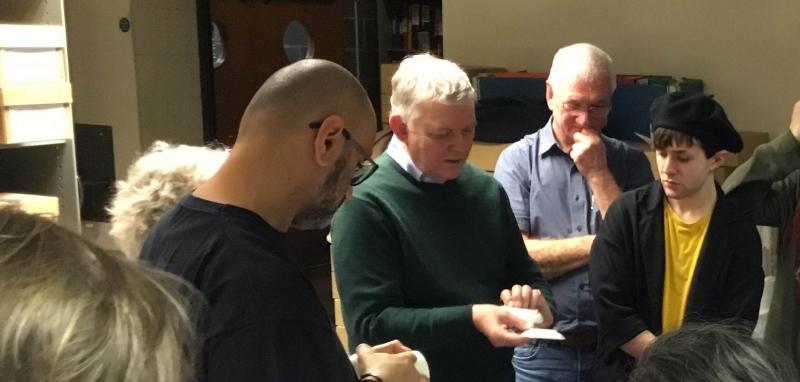MAAST in motion: Fragments of the past
As ‘Understanding Archaeological Finds’ at MAAST (MOLA Academy for Archaeological Specialist Training) reaches its mid-term point, Jacqui Pearce, our internationally renowned expert who is leading the course, rounds up the first 11 weeks.
MAAST has provided a fantastic opportunity for MOLA to open its doors to people outside of professional archaeology and share the valuable skills and experience that our experts have with people who are just setting out.
We’re looking at finds from a dig carried out at America Square, near the Tower of London, in 1987, and revisiting the archive to make a full record of what was recovered. Our aim is to work together to come to a better understanding of one very large and important finds assemblage in particular, and to publish our findings at the end of the course.
For various reasons it was not possible to study these finds when the site was first dug, so this is an ideal opportunity to use our shared skills, expertise and enthusiasm to get involved in the ‘archaeology of archaeology’. The assemblage in question includes an exceptional collection of ceramics – with a high proportion of Chinese and English porcelain – as well as glass, clay pipes and other finds. It was probably thrown away at the very beginning of the 19th century by one of the households, or perhaps more likely a public house situated in the square at this date.
Over the past 11 weeks, the group has been exploring how to identify, sort, record, label and care for the different types of pottery that were dumped in a single deposit, probably all at the same time or over a very short period. We work together in small groups, which gives everyone a chance to handle and get a feel for the various wares and vessel forms that were in everyday use 200 years ago.
The site has provided us with a varied and fascinating collection of pottery to look at and we’re now beginning to piece together a better picture of life in this part of London in the past.
We’ve been exploring the different methods and skills that come together behind the scenes to make sense of pottery. Here’s a few of our highlights so far:
Illustration and technical drawing with Faith Vardy
In week three we were joined by Faith Vardy, one of MOLA’s Archaeological Illustrators. Faith demonstrated how technical drawings are made and why they’re important.
Photographing archaeological finds with Andy Chopping
In week six our Head of Photography, Andy Chopping, delivered a workshop on finds photography where he demonstrated the different methods used to photograph finds for publication.
Chinese porcelain and a visit from expert Anton Gabszewicz
We were very fortunate to be joined by Anton in week 10 for a masterclass in identifying the difference between English and Chinese porcelain. Anton is one of this country’s foremost experts in 18th-century porcelain. Formerly at Christie’s, he was also one of the resident experts on Antiques Roadshow.

It has been a pleasure to share my experience and to help our group gain practical, hands-on experience working with real archaeological material. Next term we’ll be moving on to look at many of the other kinds of finds from our America Square site and there will be more guest posts from the group here on our blog.
MAAST is made possible thanks to support from the Heritage Lottery Fund and The Radcliffe Trust. To follow the journey, follow #MAAST on Twitter, Facebook and Instagram.